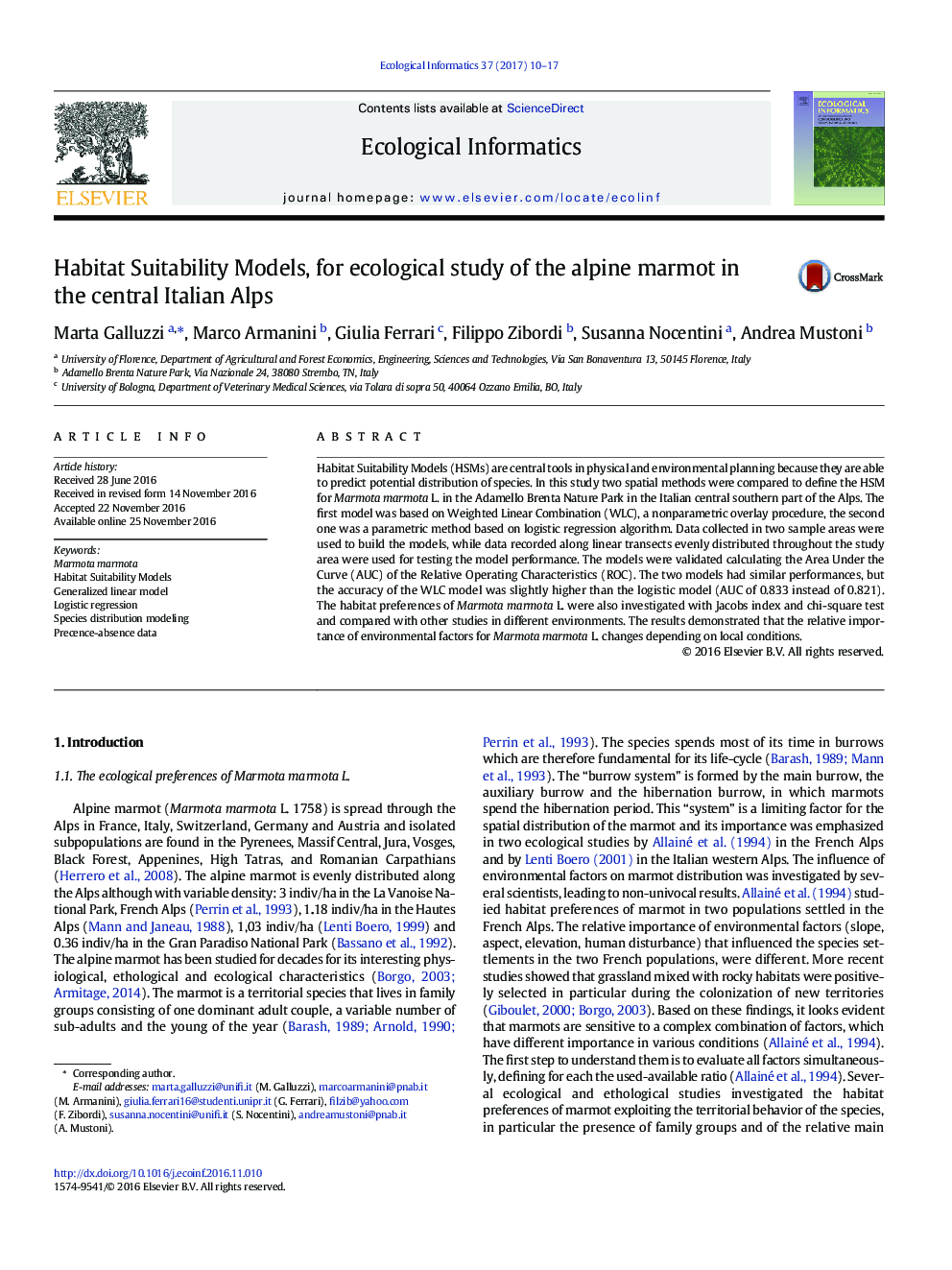| Article ID | Journal | Published Year | Pages | File Type |
|---|---|---|---|---|
| 5741956 | Ecological Informatics | 2017 | 8 Pages |
â¢Habitat Suitability Models (HSMs) are central tools in physical and environmental planningâ¢We performed HSMs to predict potential distribution of species and to deepen its the ecological knowledgeâ¢We compared a nonparametric Weighted Linear Combination approach against a parametric procedure based on logistic regression.â¢The models were based on field observations and validated against independent observations, by the ROC and AUC statistics.â¢Results showed that the relative importance of environmental factors for alpine marmot changes depending on local conditions.
Habitat Suitability Models (HSMs) are central tools in physical and environmental planning because they are able to predict potential distribution of species. In this study two spatial methods were compared to define the HSM for Marmota marmota L. in the Adamello Brenta Nature Park in the Italian central southern part of the Alps. The first model was based on Weighted Linear Combination (WLC), a nonparametric overlay procedure, the second one was a parametric method based on logistic regression algorithm. Data collected in two sample areas were used to build the models, while data recorded along linear transects evenly distributed throughout the study area were used for testing the model performance. The models were validated calculating the Area Under the Curve (AUC) of the Relative Operating Characteristics (ROC). The two models had similar performances, but the accuracy of the WLC model was slightly higher than the logistic model (AUC of 0.833 instead of 0.821). The habitat preferences of Marmota marmota L. were also investigated with Jacobs index and chi-square test and compared with other studies in different environments. The results demonstrated that the relative importance of environmental factors for Marmota marmota L. changes depending on local conditions.
